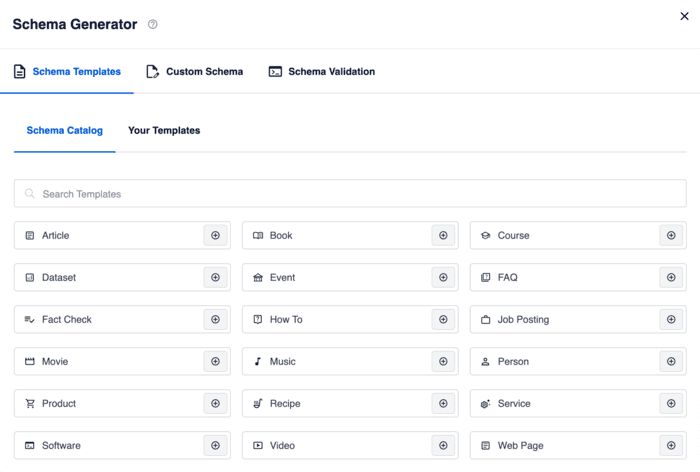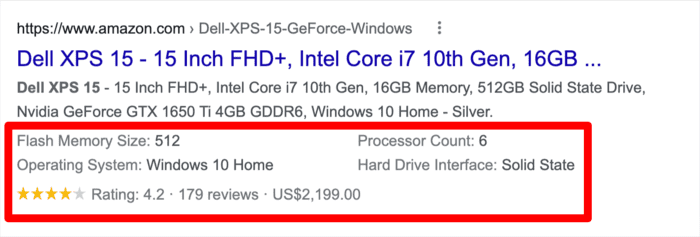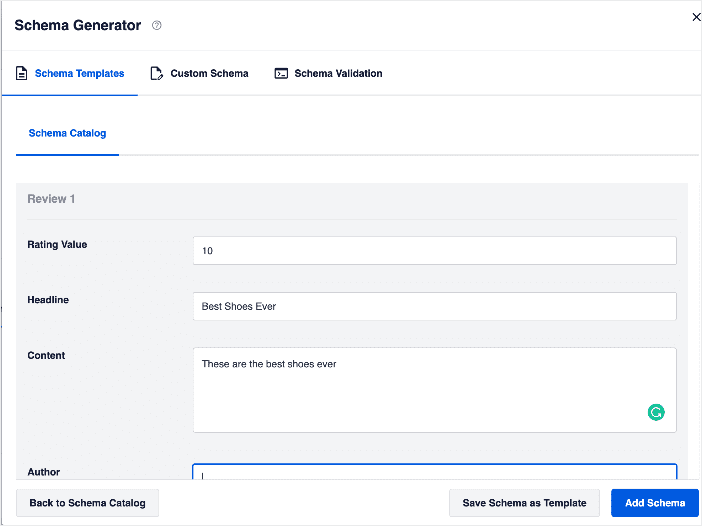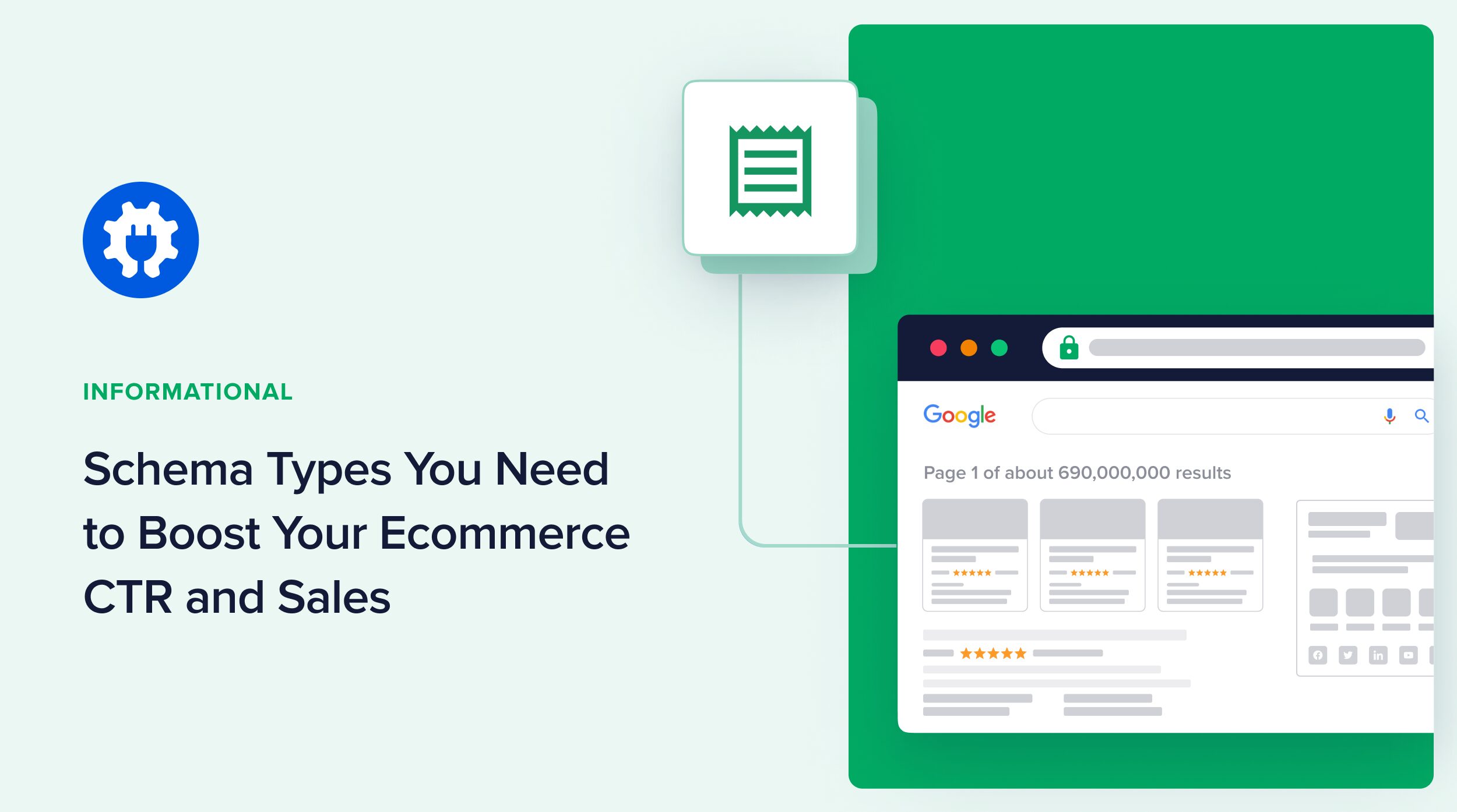[ad_1]
Would you like to know the different schema types you can implement on your eCommerce site to boost clickthrough rates (CTR) and drive sales?
As an ecommerce merchant, getting noticed on search engine results pages (SERPs) and having users click on your search listing is critical to success.
In this article, we’ll show you the schema types that will help you boost your ecommerce website’s CTR and drive more sales.
What is Schema Markup?
Schema markup, also known as structured data, is a semantic language that helps search engines better understand your content. It involves using tags that give search engines more context about your pages or posts.
Implementing schema markup on your website helps search engines display rich snippets on SERPs. These are more informative and interactive search listings that give users more details about your search listing, making your search listings more prominent and attractive. This results in better CTRs and results in a boost in sales.
How to Add Schema Markup in WordPress
Adding schema markup in WordPress is super easy if you have a powerful SEO plugin like All In One SEO. Here’s how you can do it without getting expert help.
Step 1: Install AIOSEO
The first step to adding product schema in WordPress is installing and activating All In One SEO (AIOSEO).

AIOSEO is a powerful SEO plugin that’s been downloaded over 100 million times. It has many advanced SEO tools and features to help you improve your rankings and drive targeted traffic to your site. That’s why savvy marketers and website owners trust the plugin for their SEO.
One of the modules most ecommerce store owners love in AIOSEO is our next-gen Schema Generator.
Thanks to a loaded Schema Catalog, this revolutionary feature enables you to add any schema markup type to your posts and pages. Our Schema Catalog features most of the popular schema types ecommerce sites need. And you can add any of them without requiring technical or coding skills.
For detailed instructions on installing AIOSEO, check out this step-by-step guide.
Step 2: Choose and Add the Schema Markup You Want
Once you’ve installed and activated AIOSEO, you can easily add any schema type to your posts and pages. First, open the page you want to add your schema markup (in editor mode). Next, scroll down to AIOSEO Settings » Schema. This will show you the default schema type for that page.


If you want to change the schema type to something else, simply click the Generate Schema button. This will open up our Schema Catalog, from which you can choose the schema you want.


Next, select the schema markup you want by clicking on the + button. A modal will open up, allowing you to fill in the relevant information for that particular schema type.
Once you’ve filled in all the fields, simply click the Add Schema button, and AIOSEO will generate and add the schema code to your page or post.
You can still add a custom schema markup if your schema markup type is not in our Schema Catalog. Granted, you’ll have to use a 3rd party tool to generate the code, then paste it into the provided field in AIOSEO’s Custom Schema generator.


Finally, click the Add Schema button to add the custom schema type to your page.
Adding schema markup has never been easier, even if you’re new to WordPress and SEO! You don’t even need any technical or coding skills.
Check out our tutorial on adding structured data to a page or post for detailed instructions.
4 Schema Types You Need to Boost your Ecommerce SEO, Improve CTR, and Drive Sales
You can implement different schema markups on your ecommerce site to improve your SEO, attract clicks, and sell more. Below are the 4 most impactful ones:
1. Product Schema
Product schema markup gives search engines more information about your product. This includes:
- Product description
- Price
- Availability
- Brand
- Product image
- And more.
The extra information enables search engines to display more informative, rich snippets of your product page on SERPs.


This extra information increases your CTR as shoppers can tell right from SERPs that the product you’re offering is what they’re looking for.
For detailed steps, check out our tutorial on adding and editing Product schema in WordPress.
2. Merchant Center Listing Schema
Google Merchant Center (GMC) is a powerful platform created by Google to help ecommerce merchants manage how their online product inventory looks on SERPs and other Google search marketing and advertising products.


The primary purpose of GMC is to help you add special schema markup that results in enhanced product rich snippets that stand.
And because these snippets are more prominent and interact, they help generate more sales. Other advantages of GMC listing schema include the following:
- Display shipping information in rich snippets
- Add product attributes to rich snippets
- Get featured among popular products ranking for that search term.
Until recently, GMC listing schema was exclusively reserved for ecommerce merchants with a Google Merchant Center account. Now, with All In One SEO (AIOSEO), you can also benefit from its powerful schema markup.
Check out our step-by-step guide for detailed instructions on adding GMC listing schema.
3. Review Schema
Another schema type that can help you boost clicks and drive sales is review schema. This is because reviews are great for gaining the trust of searchers.


Research shows that 72% of shoppers say they will only take action after seeing a positive review, making this an important part of your conversion rate optimization (CRO).
If you’re a WordPress user, adding review schema to your pages is super easy. To get started, open your post or page in editor mode, then edit your product schema.
Next, scroll down to the reviews section and add your customer reviews.


Once you’ve added the review, click on the Add Schema button. You can add as many reviews as you have.
Adding reviews to your product schema results in them appearing in your Google search snippets. This makes generating sales much easier.
4. FAQ Schema
Most shoppers have a lot of questions concerning products they’re considering buying. That’s why you need to create a lot of QA-based content. In addition, you must create FAQ pages or sections to help users become more confident in your brand or product. For example, you could answer questions concerning delivery times, payment options, warranty length etc.
But adding FAQs on your ecommerce site isn’t enough. You must also add FAQ schema markup to help your content stand out on SERPs.


Displaying FAQs in rich snippets also helps you prove search intent and show shoppers that their pertinent questions will be answered on your page. This will help drive up your organic CTR, resulting in better sales and a boost in SEO
Schema Types for Ecommerce: Your FAQs Answered
Do I need to use schema markup on every product page?
Yes, for maximum visibility and rich results, you’ll want to implement full schema markup for all your main product pages. This ensures search engines can properly understand and display all the relevant metadata about each product you sell.
How does schema markup impact search rankings?
While having proper schema doesn’t directly increase search rankings, it can indirectly improve rankings by increasing click-through rates from search results pages. The more compelling and informative your rich snippets, the more likely users are to click, which sends positive engagement signals to search engines.
Is schema markup required for ecommerce sites?
No, schema markup is not strictly required. However, not using it means you miss out on all the rich result opportunities in search like review stars, pricing, availability, and other key eCommerce highlights. These rich snippets can dramatically improve visibility and traffic.
Use These Schema Types to Drive Sales and Grow Your Ecommerce Business
Boosting your organic CTR and driving sales is critical to growing your business. For that to happen, you must ensure your search snippets are prominent on SERPs and offer valuable information.
That’s exactly what schema markup does.
We hope this post helped you know which schema types help you do just that. You may also want to check out other articles on our blog, like how to add emojis to your search snippets and our local business SEO checklist.
If you found this article helpful, then please subscribe to our YouTube Channel. You’ll find many more helpful tutorials there. You can also follow us on X (Twitter), LinkedIn, or Facebook to stay in the loop.
Disclosure: Our content is reader-supported. This means if you click on some of our links, then we may earn a commission. We only recommend products that we believe will add value to our readers.
[ad_2]


